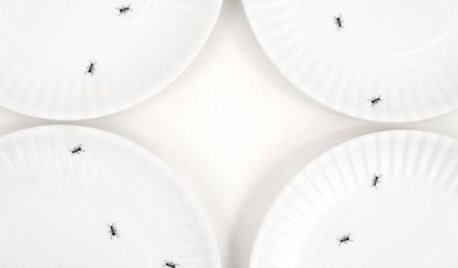Pests: Live and let live?
enoughcliches
17 years ago
Related Stories

DECORATING GUIDESBudget Decorator: Let’s Go Thrifting
Dip into the treasure trove of secondhand pieces for decor that shows your resourcefulness as much as your personality
Full Story
GARDENING GUIDESOrganic Matters: Thwart Insect Pests With Trap Crops
Add a few sacrificial plants to your garden to lure insects away from the harvest
Full Story
PRODUCT PICKSGuest Picks: Let 'Starry Night' Inspire a Formal Living Room
Use van Gogh's masterpiece to create a living room that's a work of art
Full Story
GARDENING AND LANDSCAPINGCozy Outdoor Rooms Let You Snuggle Up to Fall
Drape a throw and let the firelight glow. These ideas for your outdoor room will make fast friends of you and autumn
Full Story
LIVING ROOMSLet's Chic-ify the Game Room
Pour yourself a cosmo and kick back on a chaise for a stylish football party even non-watchers can love
Full Story
LANDSCAPE DESIGNLet's Revisit Some Revolutionary Garden Thinking
One book changed the vision of postwar British garden design forever. See how it's influencing your garden today
Full Story
GARDENING AND LANDSCAPINGAlmost Invisible Outdoor Furniture Lets Views Star
No less stylish for all its modesty, barely there furniture for gardens, patios and decks is designed to offer a clear view of the landscape
Full Story
GREEN BUILDINGLet’s Clear Up Some Confusion About Solar Panels
Different panel types do different things. If you want solar energy for your home, get the basics here first
Full Story
MOST POPULARHouzz TV: Let’s Go Island Hopping
Sit back and enjoy a little design daydreaming: 89 kitchen islands, with at least one for every style
Full Story
PRODUCT PICKSGuest Picks: Let the Ants Come Marching In
Catch the decorating bug — or maybe even a whole colony of ’em — with accessories sporting cute versions of crawly critters
Full StoryMore Discussions







rhizo_1 (North AL) zone 7
enoughclichesOriginal Author
Related Professionals
Mooresville Landscape Contractors · Springfield Landscape Contractors · Broadlands Landscape Contractors · Framingham Landscape Contractors · Gallatin Landscape Contractors · Lees Summit Landscape Contractors · Milton Landscape Contractors · Oviedo Landscape Contractors · Painesville Landscape Contractors · Ringwood Landscape Contractors · Soddy Daisy Landscape Contractors · Tehachapi Landscape Contractors · Yuba City Landscape Contractors · Golden Valley Landscape Contractors · Seabrook Swimming Pool Buildersrhizo_1 (North AL) zone 7
Kimmsr